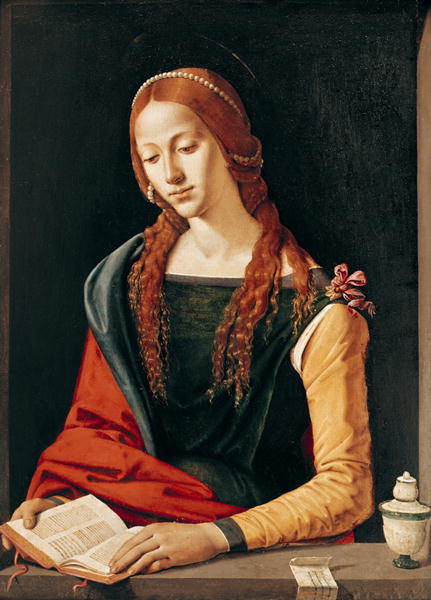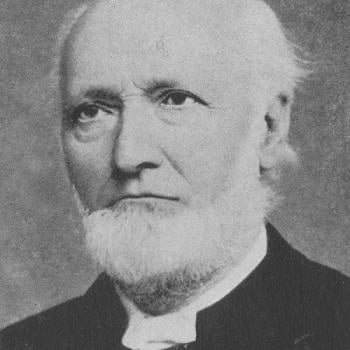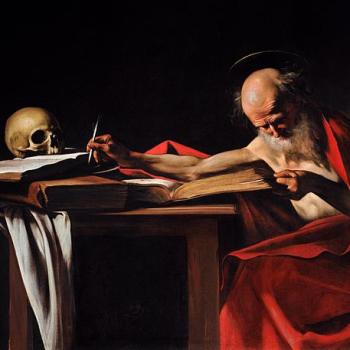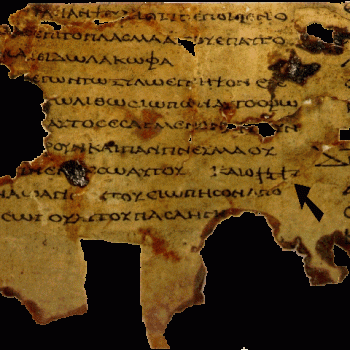. . . and/or the Repentant “Sinner” Woman of Luke 7?

As I understand it, the notion that Mary Magdalene was a prostitute comes from conflating the woman who anointed Jesus’ feet (Luke 7) with Mary Magdalene. Luke 7:39 seems to imply that the woman described was a harlot (“what sort of woman this is” in RSV). The Bible itself doesn’t make this equation (at least not explicitly or directly). The Bible does plainly assert that she was cured of possession by seven demons (Lk 8:2; cf. Mk 16:9).
The Protestant New Bible Dictionary (edited by J. D. Douglas, Grand Rapids, Michigan, Eerdmans, 1962) states (“Mary”, p. 792):
-
- There is really no justification for identifying Mary of Bethany with Mary Magdalene, and certainly none for associating either with the sinful woman of Luke 7. . . . If Luke had known that the Mary of chapter 8 was the same person as the sinner of chapter 7 is it not probable that he would have made the connection explicit?
*
The Catholic Encyclopedia, however (“St. Mary Magdalen”), makes a different argument:
-
- The Greek Fathers, as a whole, distinguish the three persons:
-
- * the “sinner” of Luke 7:36-50;
-
- * the sister of Martha and Lazarus, Luke 10:38-42 and John 11; and
-
- * Mary Magdalen.
-
- On the other hand most of the Latins hold that these three were one and the same. Protestant critics, however, believe there were two, if not three, distinct persons. It is impossible to demonstrate the identity of the three; but those commentators undoubtedly go too far who assert, as does Westcott (on John 11:1), “that the identity of Mary with Mary Magdalene is a mere conjecture supported by no direct evidence, and opposed to the general tenour of the gospels.” It is the identification of Mary of Bethany with the “sinner” of Luke 7:37, which is most combatted by Protestants. It almost seems as if this reluctance to identify the “sinner” with the sister of Martha were due to a failure to grasp the full significance of the forgiveness of sin.
*
The article does concede that if we had only Luke’s Gospel to go by, this theory would be unsubstantiated:
- . . . here again we note that there is no suggestion of an identification of the three persons (the “sinner”, Mary Magdalen, and Mary of Bethany), and if we had only St. Luke to guide us we should certainly have no grounds for so identifying them.
*
But it goes on to make various deductive arguments from the book of John (none, I think, compelling) and concludes triumphantly:
- If the foregoing argument holds good, Mary of Bethany and the “sinner” are one and the same. But an examination of St. John’s Gospel makes it almost impossible to deny the identity of Mary of Bethany with Mary Magdalen.
*
So there was a tradition in western, Latin Catholicism, of one person (Mary Magdalene = Mary of Bethany = the sinner woman of Lk 7:36-50, who anointed Jesus’ feet). This article in The Catholic Encyclopedia was written by Hugh Pope in 1910. Not all traditions, however, carry equal weight, and not all are binding. Personally, I think the Greek fathers were right about this.
Nor do all Catholic sources agree with this older tradition. A Catholic Commentary on Holy Scripture, edited by Dom Bernard Orchard (London: Thomas Nelson & Sons, 1953) is a completely orthodox work, and it takes a different position. Commenting on Luke 7:36-50, it states:
- The similarities between this story and those recorded in Mt 26:6-13; Mk 14:3-9; Jn 12:1-8, have led to the opinion that the four evangelists narrate the same incident. Latin tradition since the time of St Gregory the Great has been in favour of identity; the general tradition among the Greeks (except for Origen) is that Lk’s incident is altogether different and most modern Catholic commentators adopt this view. It must be admitted that the divergences seem irreconcilable . . . There is nothing in Lk which justifies identifying her with Mary of Magdala, 8:2, or Mary of Bethany, 10:38 ff. Greek tradition generally distinguishes them all.
Note also that the Catholic Church in its first thousand years was composed of both Latin and Greek traditions. They were both Catholic. So it is not disallowed to believe that a Greek, or eastern exegetical tradition was more correct than a Latin (western) one. I think this is one such instance.
In the article, posted at Catholic News Service, “Scholars seek to correct Christian tradition on Mary Magdalene,”, written by Jerry Filteau, it is stated:
-
- In A.D. 591 Pope St. Gregory the Great preached a sermon in which he identified as one person the New Testament figures of Mary Magdalene, the sinful woman who anointed Jesus’ feet and washed them with her tears, and the Mary who was the sister of Lazarus and Martha of Bethany.
-
- Although he was only reflecting a tradition that had gained some ground in the West (and was resisted by many of the church’s early theologians), the sermon became a reference point for later scholarship, teaching and preaching in the West, Father Raymond F. Collins, a New Testament scholar at The Catholic University of America, said in an interview. . . .
-
- The identification of Mary Magdalene as a repentant sinful woman was solidified in the Latin Church for centuries by the use of that story, reported in the seventh chapter of Luke, as the Gospel reading for Mary Magdalene’s feast, July 22. In fact, in the Roman Calendar before the Second Vatican Council, the day was called the feast of “Mary Magdalene, penitent.”
-
- Father Collins noted that this changed in 1969 with the reform of the Roman Missal and the Roman Calendar. Since then the Gospel reading for Mary Magdalene’s feast has been Chapter 20, verses 1-2 and 11-18, of the Gospel of John.
This seems to have been a rather late tradition, in terms of the fathers, with Gregory Great living into the 7th century. Thus, it is not particularly compelling as proof that this exegetical tradition was apostolic, and preserved in the first five centuries (when most of the well-known Church fathers lived). Further research along those lines would yield fascinating results, I’m sure.
Fr. William Saunders, on the other hand, in his article, “Who Really Was Mary Magdalene?,” (Catholic Culture website), takes the traditional view expressed in The Catholic Encyclopedia.
The Catholics United for the Faith website put out a lengthy, informative article about Mary Magdalene, “St. Mary Magdalene: A Model Penitent,” taking the traditional western view also, but noted (importantly for our purposes):
- Either way, although ancient, this tradition is not to be confused with an essential aspect of the Catholic faith. There are many reasons to accept this tradition, but it is not a doctrine of the Church.
*
Catholics (as seen in the above conflicting understandings) are at liberty to differ on this question. In any event, whatever her sins were, St. Mary repented of them and became a great saint and early witness of the resurrected Jesus, and that is far more important than these other “identity” disputes.
***













